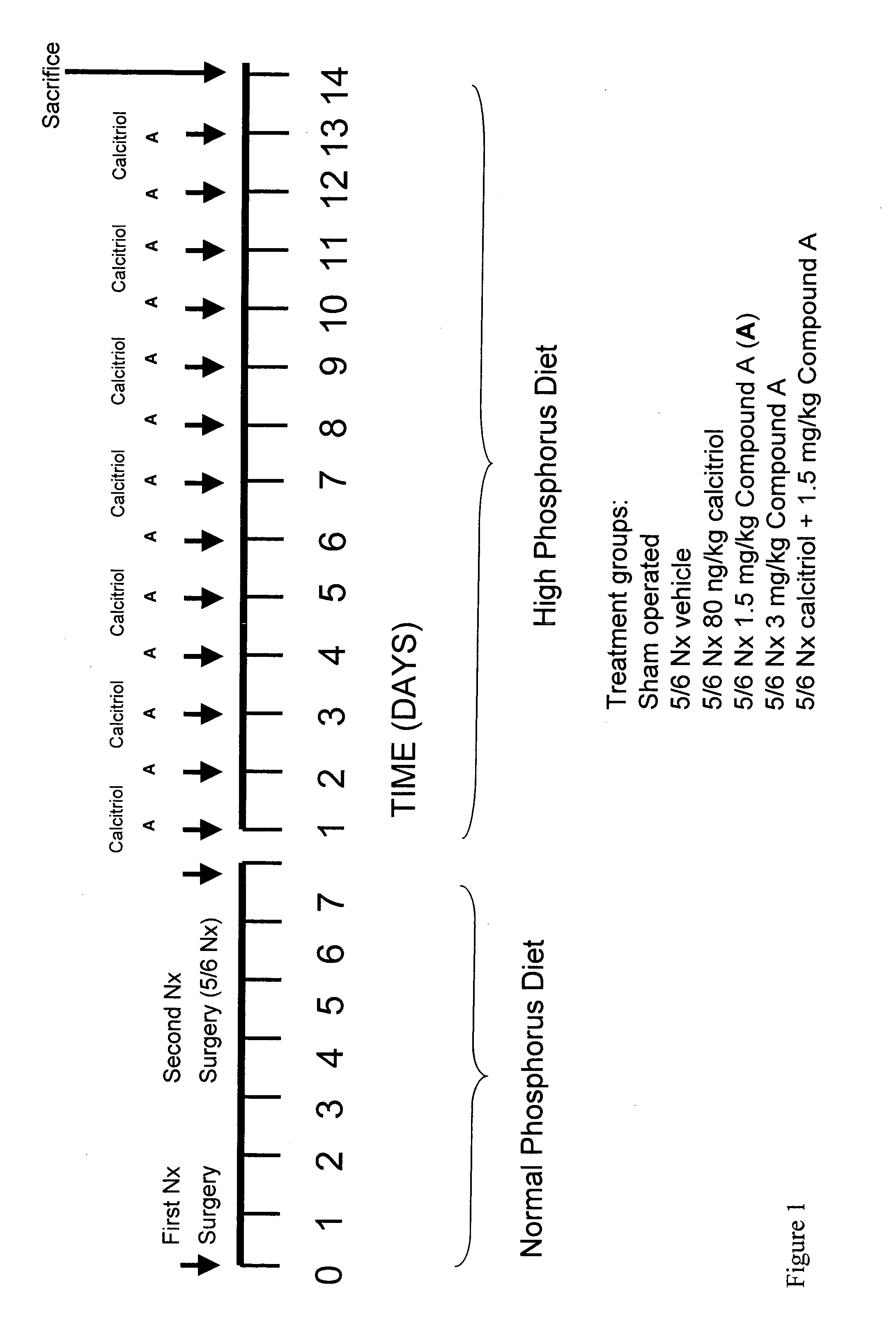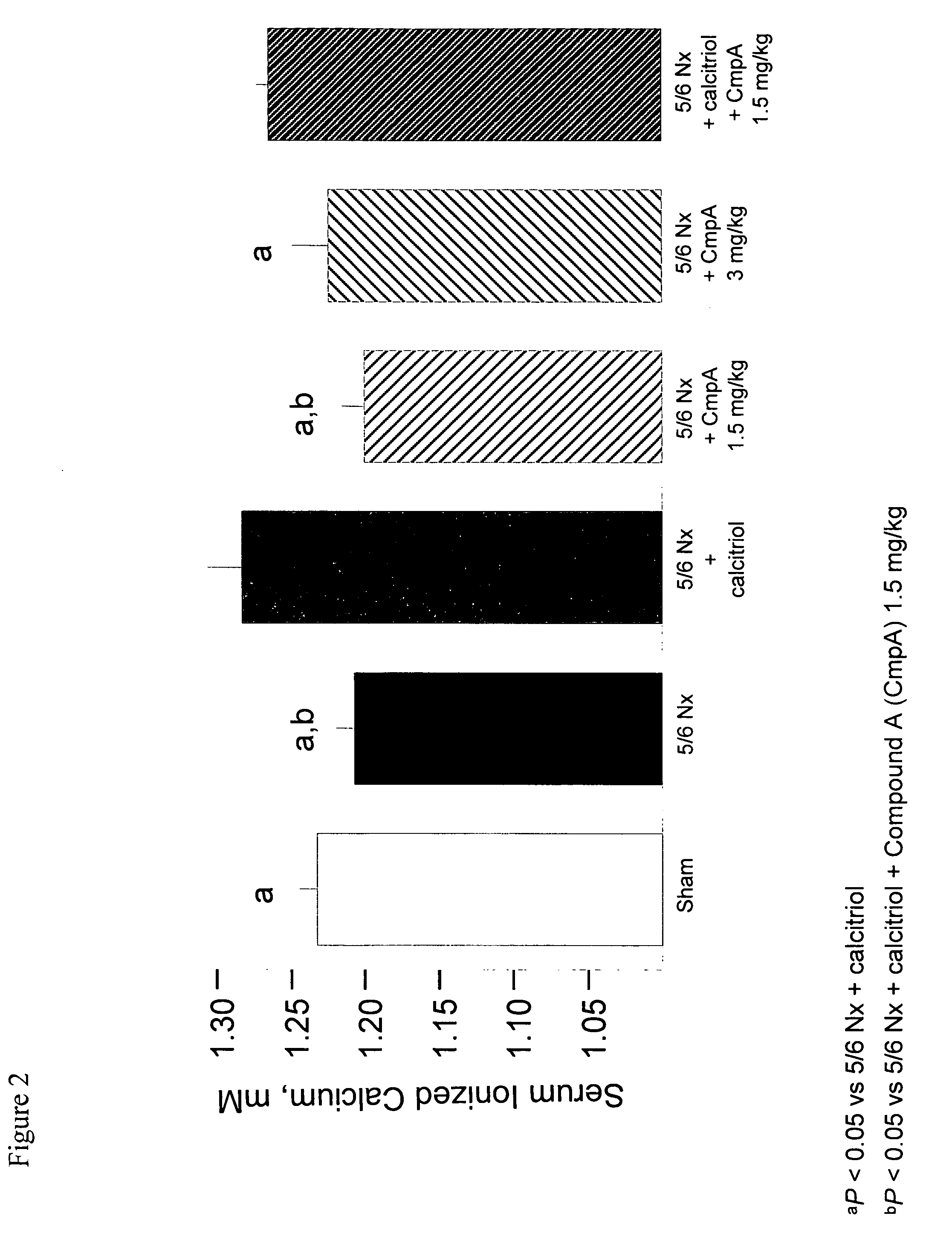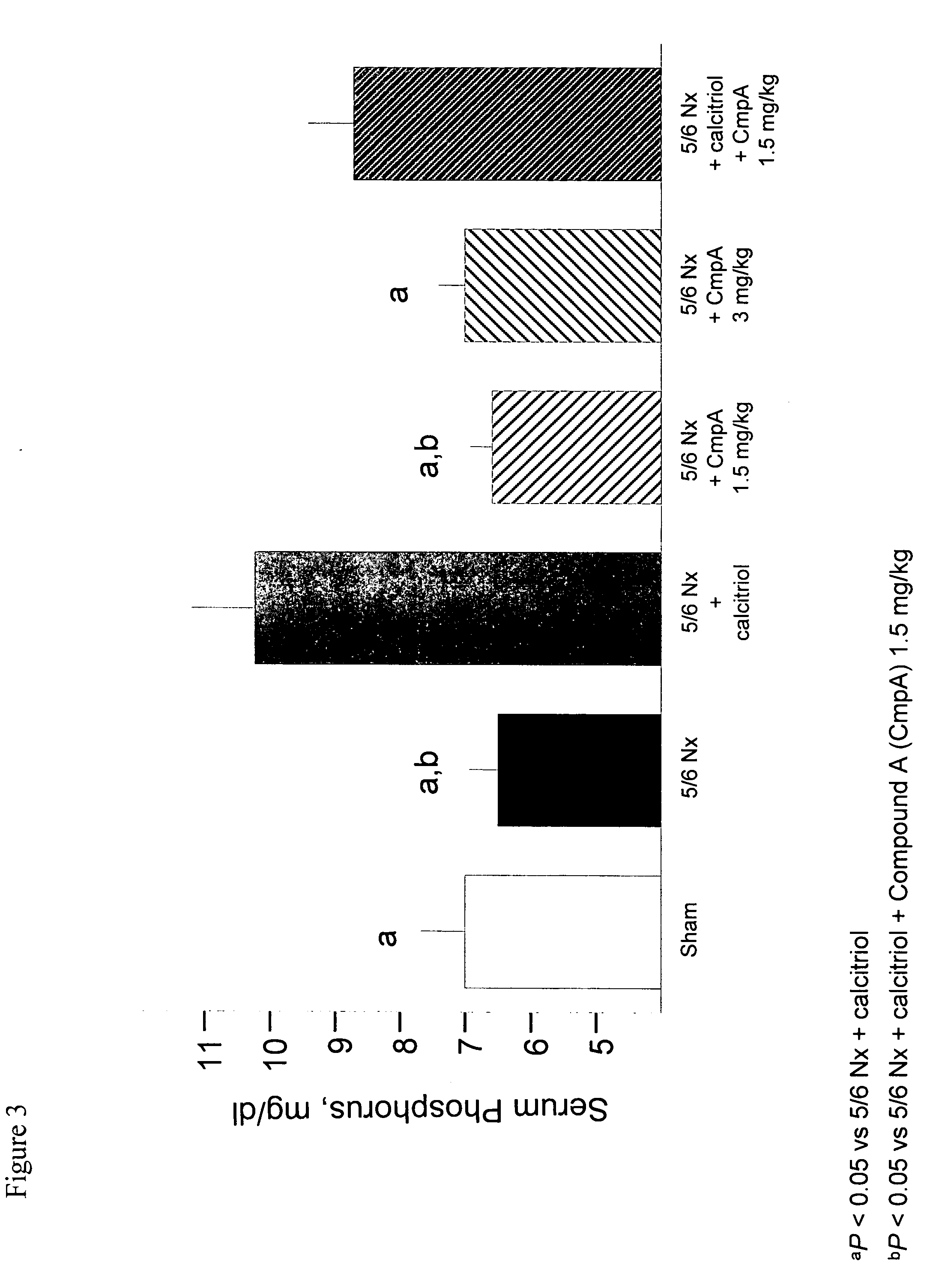Methods of decreasing calcification
a calcification and serum creatinine technology, applied in the field of medicine, can solve the problems of increasing the risk of cardiovascular morbidity and mortality, not adequately explaining the high mortality rate of cardiovascular causes in the patient population, and increasing the risk of vascular calcification, so as to achieve the effect of increasing serum creatinine and decreasing the serum creatinine level
- Summary
- Abstract
- Description
- Claims
- Application Information
AI Technical Summary
Benefits of technology
Problems solved by technology
Method used
Image
Examples
example 1
[0142] This example demonstrates that the calcimimetic N-(3-[2-chlorophenyl]-propyl)-R-α-methyl-3-methoxybenzylamine HCl (Compound A) reduced serum PTH in uremic rats with secondary hyperparathyroidism (HPT) without causing aortic calcification and attenuated the mineralizing effect of calcitriol on vascular tissue.
[0143] Animals
[0144] Male Wistar rats weighing 250 g were purchased from the Animal Breeding Facility of the University of Cordoba (Spain). Rats were housed with a 12 hr / 12 hr light / dark cycle and given ad libitum access to normal diet (calcium=0.9%, phosphorus=0.6%). The experimental protocols were reviewed and approved by the Ethics Committee for Animal Research of the Universidad de Cordoba (Spain), and all animals received humane care in compliance with the Principles of Laboratory Animal Care, formulated by the National Society for Medical Research and the Guide for the Care and Use of Laboratory Animals prepared by the National Academy of Science.
[0145] 5 / 6 Nephr...
example 2
[0168] This example demonstrates that the calcimimetic N-((6-(methyloxy)-4′-(trifluoromethyl)-1,1′-biphenyl-3-yl)methyl)-1-phenylethanamine (Compound B) attenuates parathyroid (PT) hyperplasia, decreases serum PTH and reduces aortic vascular calcification in an animal model of CKD.
[0169] Male Sprague-Dawley rats (Charles River Laboratories) weighing 300-350 grams were used in these studies. All animals received standard lab chow (Harlan Teklad, Madison, Wis.) prior to the start of the studies. The standard lab chow was changed to a standard rodent lab chow that contained 0.75% adenine. Animals received food and water ad libitum. The animal protocol was approved by the Institutional Animal Care and Use Committee of Amgen Inc. (Thousand Oaks, Calif.).
[0170] Animals were fed the adenine containing chow for 21 days, and prior to the start of the adenine diet animals were pre-bleed for baseline measurements of ionized calcium, PTH, BUN and creatinine and phosphorus levels (FIG. 9).
[01...
example 3
[0185] This example demonstrates that the calcimimetic N-((6-(methyloxy)-4′-(trifluoromethyl)-1,1′-biphenyl-3-yl)methyl)-1-phenylethanamine (Compound B) significantly reduces paricalcitol-mediated increases in Ca and P content of aortic tissue from uremic animals.
[0186] Animals
[0187] Wistar rats (200-250g), fed a 0.6% Ca and 1.2% P diet, were 5 / 6 nephrectomized (5 / 6 Nx) or sham-operated (sham). Rats received the following treatments starting one day postsurgery: Sham+vehicle, 5 / 6 Nx+vehicle, 5 / 6 Nx+paricalcitol 240 ng / kg every 48 hr interperitoneally, 5 / 6 Nx+paricalcitrol+Compound B (1.5 mg / kg every 48 hr subcutaneously) or 5 / 6 Nx+Compound B (1.5 mg / kg every 48 hr subcutaneously). After 14 days, rats were anesthetized and sacrificed. The thoracic aorta was removed and processed for measurement of Ca and P content. Blood was collected at sacrifice to measure serum PTH, ionized Ca, P and creatinine. Results are summarized in Table 1 below.
TABLE 1 CreatinineIonized CaAortic Ca,Aort...
PUM
| Property | Measurement | Unit |
|---|---|---|
| thickness | aaaaa | aaaaa |
| area | aaaaa | aaaaa |
| run time | aaaaa | aaaaa |
Abstract
Description
Claims
Application Information
 Login to View More
Login to View More - R&D
- Intellectual Property
- Life Sciences
- Materials
- Tech Scout
- Unparalleled Data Quality
- Higher Quality Content
- 60% Fewer Hallucinations
Browse by: Latest US Patents, China's latest patents, Technical Efficacy Thesaurus, Application Domain, Technology Topic, Popular Technical Reports.
© 2025 PatSnap. All rights reserved.Legal|Privacy policy|Modern Slavery Act Transparency Statement|Sitemap|About US| Contact US: help@patsnap.com



